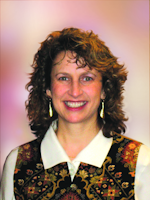NEUROSCIENCE: NPI launches neuroscience group at BRAIN Initiative conference
Leaders of the National Photonics Initiative (NPI), an alliance of top scientific societies uniting industry and academia to raise awareness of photonics, launched its Photonics Industry Neuroscience Group alongside officials from the White House Office of Science and Technology (OSTP) in conjunction with the White House Brain Research through Advancing Imaging Neurotechnologies (BRAIN) Initiative conference on September 30, 2014. "The NPI industry group is truly the first of its kind—a multidisciplinary industry consortium focused on developing new optics and photonics technologies to help achieve the President's goals for the BRAIN Initiative," said NPI Steering Committee Chairman Tom Baer. "Launching our industry consortium alongside OSTP signifies our joint commitment to solving the brain's greatest mysteries through optics and photonics innovation."
NPI industry group members have committed to invest more than $30 million in research and development over the next 3 years to advance optics and photonics technology in support of the BRAIN Initiative. The group includes such leaders in optics and photonics as Accumetra, LLC, Agilent, Applied Scientific Instrumentation, Coherent, Hamamatsu, Inscopix, Inc., Spectra-Physics, and Thorlabs. Under the NPI, the industry consortium will work closely with national BRAIN Initiative leadership and neuroscience research communities to help achieve the administration's objective to revolutionize our understanding of the human brain.
The consortium will address such challenges as:
• Developing the imaging optics, laser sources, automated scanning technology, and high-resolution cameras to provide up to a 100-fold increase in the capability of imaging groups of thousands of active neurons;
• Developing miniature, affordable, portable, and implantable microscopes compatible with high-throughput facilities for therapeutic screening based on neural activity signatures;
• Using large-scale, high-throughput protein engineering technology to develop a new generation of fluorescent indicators of neural activity with 10-fold improvements in efficiency and temporal response; and
• Developing automated software for detailed mapping of the human brain, architecture, neuronal wiring geometry, and dynamic activity from three-dimensional data sets generated by magnetic resonance imaging (MRI), computed tomography (CT), and microscopic imaging.
Launched in April 2013, the BRAIN Initiative was created in response to President Obama's call for innovative technologies that can create a dynamic understanding of brain function, and ultimately help researchers find new ways to treat, cure, and even prevent brain disorders such as Alzheimer's disease, epilepsy, and traumatic brain injury (TBI). For more information on NPI, visit www.lightourfuture.org.

Barbara Gefvert | Editor-in-Chief, BioOptics World (2008-2020)
Barbara G. Gefvert has been a science and technology editor and writer since 1987, and served as editor in chief on multiple publications, including Sensors magazine for nearly a decade.
